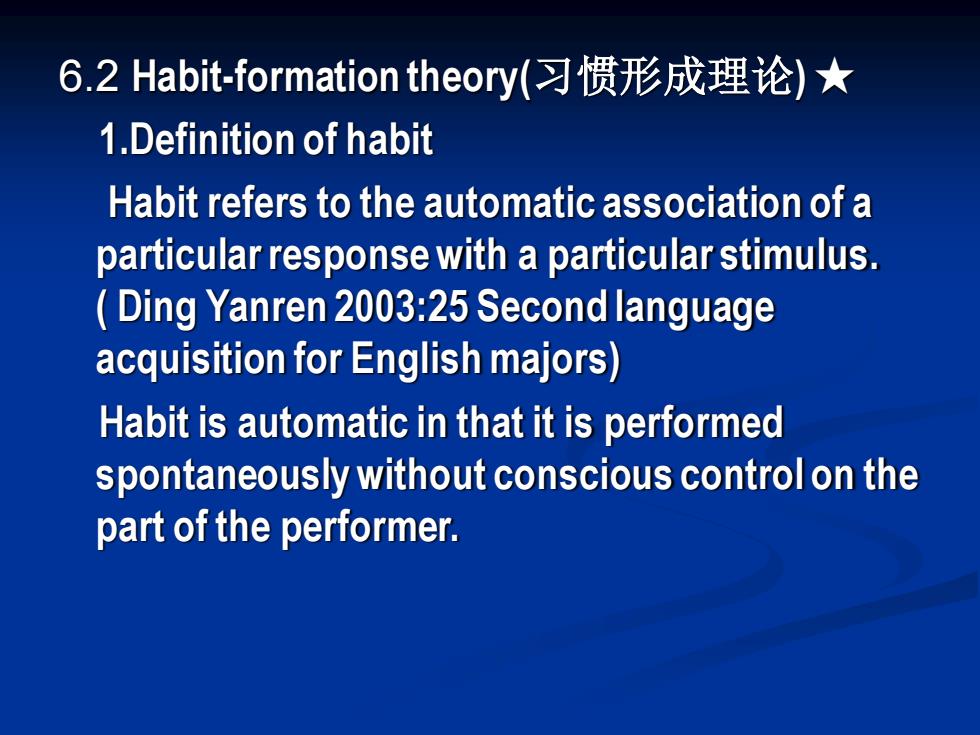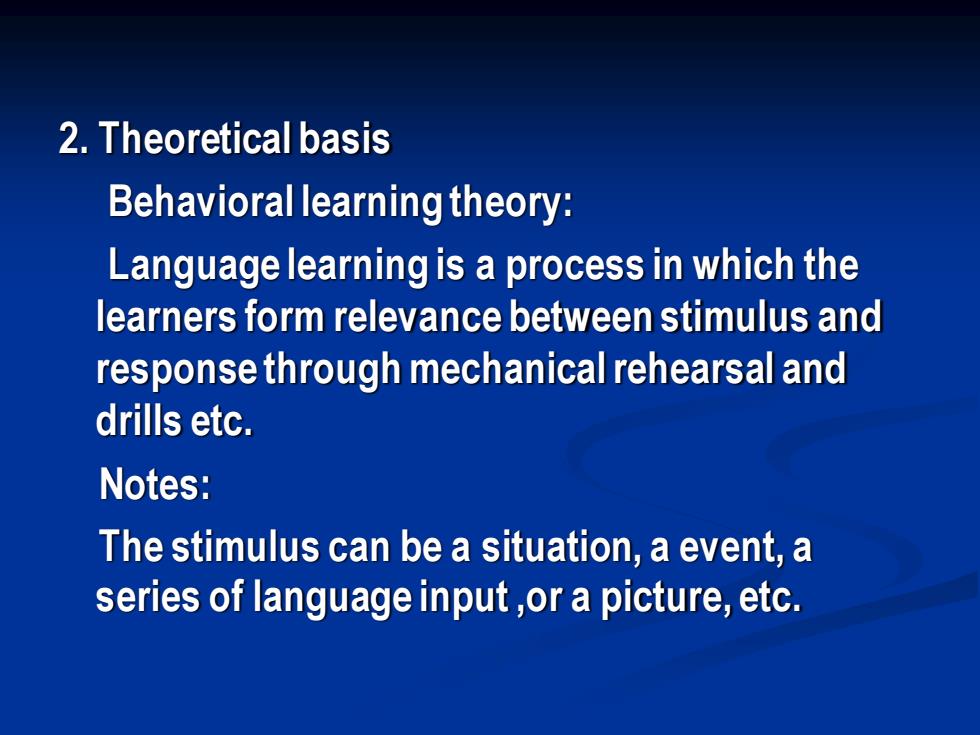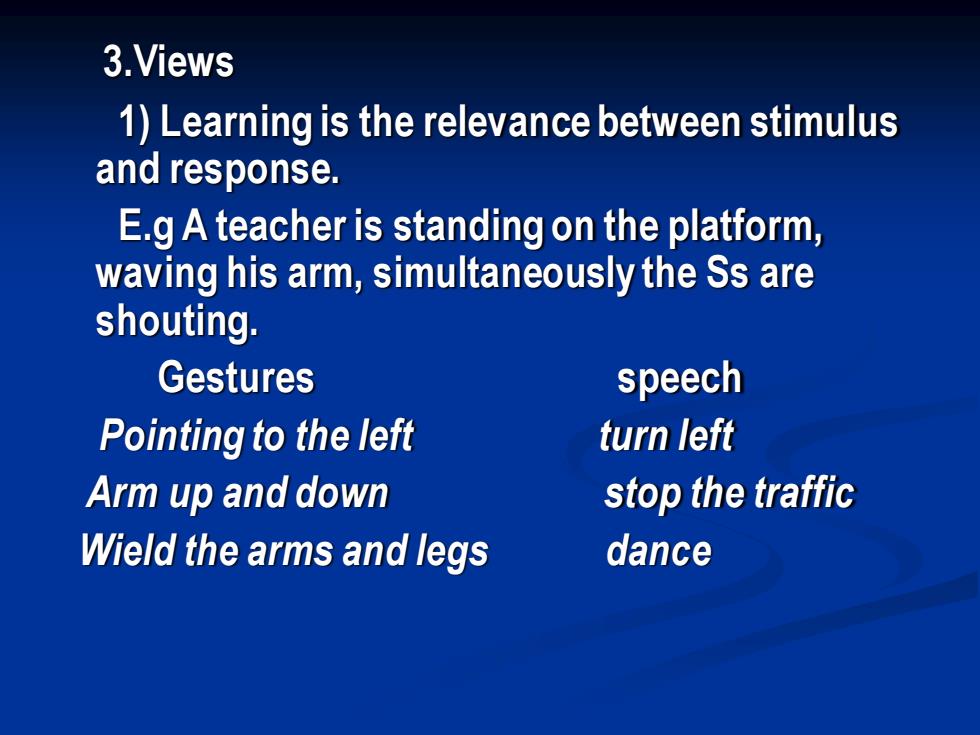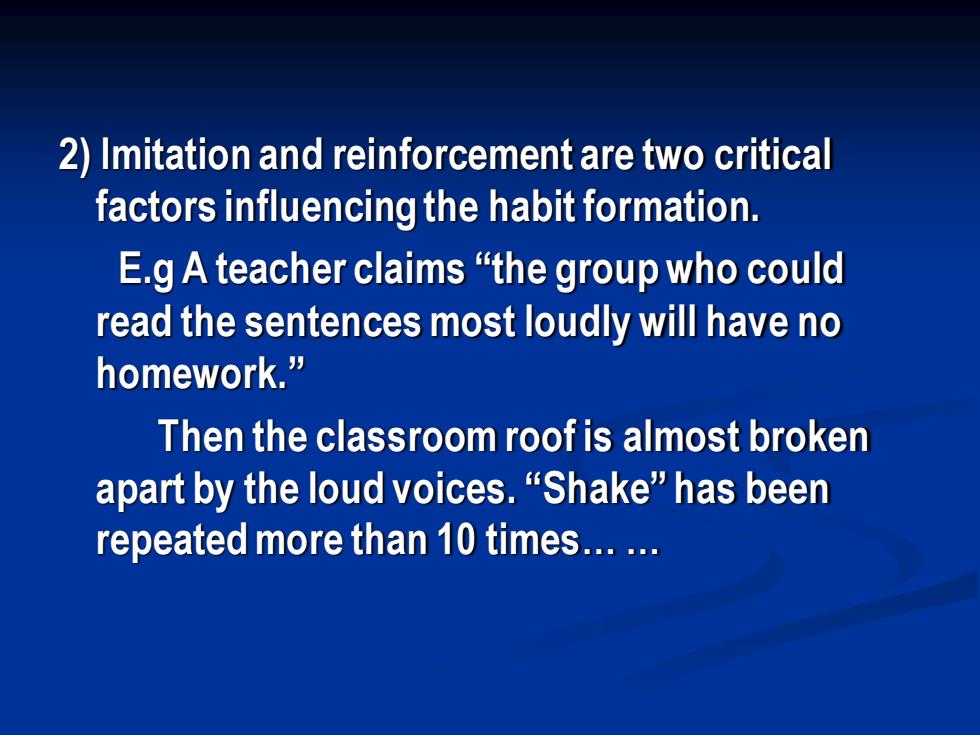
6.2 Habit-formation theory(习惯形成理论)★ 1.Definition of habit Habit refers to the automatic association of a particular response with a particular stimulus. Ding Yanren 2003:25 Second language acquisition for English majors) Habit is automatic in that it is performed spontaneously without conscious control on the part of the performer
6.2 Habit-formation theory(习惯形成理论) ★ 1.Definition of habit Habit refers to the automatic association of a particular response with a particular stimulus. ( Ding Yanren 2003:25 Second language acquisition for English majors) Habit is automatic in that it is performed spontaneously without conscious control on the part of the performer

2.Theoretical basis Behavioral learning theory: Language learning is a process in which the learners form relevance between stimulus and response through mechanical rehearsal and drills etc. Notes: The stimulus can be a situation,a event,a series of language input ,or a picture,etc
2. Theoretical basis Behavioral learning theory: Language learning is a process in which the learners form relevance between stimulus and response through mechanical rehearsal and drills etc. Notes: The stimulus can be a situation, a event, a series of language input ,or a picture, etc

3.Views 1)Learning is the relevance between stimulus and response. E.g A teacher is standing on the platform, waving his arm,simultaneously the Ss are shouting. Gestures speech Pointing to the left turn left Arm up and down stop the traffic Wield the arms and legs dance
3.Views 1) Learning is the relevance between stimulus and response. E.g A teacher is standing on the platform, waving his arm, simultaneously the Ss are shouting. Gestures speech Pointing to the left turn left Arm up and down stop the traffic Wield the arms and legs dance

2)Imitation and reinforcement are two critical factors influencing the habit formation. E.g A teacher claims "the group who could read the sentences most loudly will have no homework.” Then the classroom roof is almost broken apart by the loud voices.“Shake'”has been repeated more than 10 times
2) Imitation and reinforcement are two critical factors influencing the habit formation. E.g A teacher claims “the group who could read the sentences most loudly will have no homework.” Then the classroom roof is almost broken apart by the loud voices. “Shake” has been repeated more than 10 times.

3)Learners firstly form the strategies to imitate languages from the adults.But later they apply the strategies in the SLL/FLL. Eg爷爷:我要大碗。 小女孩:我也要大碗。(手拿大碗走开〉 注:以上是语言模仿。 E.g 男主角:瞧瞧,车坏了吧?(交际策略) 小孩:你把你的裤子穿好! 注: 以上是策略模仿
3) Learners firstly form the strategies to imitate languages from the adults. But later they apply the strategies in the SLL/FLL. E.g 爷爷:我要大碗。 小女孩:我也要大碗。(手拿大碗走开) 注: 以上是语言模仿。 E.g 男主角:瞧瞧,车坏了吧?(交际策略) 小孩:你把你的裤子穿好! 注:以上是策略模仿。